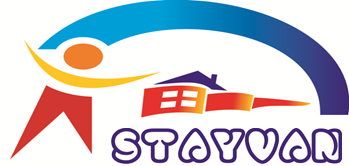Exploring India’s Banking Sector: The Past, Present, and The Future
Every day, the banking sector impacts our lives in ways we might not even realise. Picture this: you head to the grocery store in the morning, effortlessly making a payment with your credit card. Simultaneously, an entrepreneur is at a local bank, seeking a loan to turn their business plan into reality.
The banking sector, with its ability to safeguard money, provide loans, and ensure smooth transactions, is an integral part of our daily lives. Moreover, it is a driving force for the Indian economy, fueling investment, consumption, and overall growth.
The banking sector in India has witnessed a remarkable evolution over the years, transitioning from outdated and inefficient systems to emerging as one of the most technologically advanced sectors. Government reforms, increased consumer demand, improved asset quality, and technological advancements have been key drivers of this transformation. In this blog, we will explore the journey of the Indian banking sector and highlight the growth drivers and trends in the sector.
Evolution of the banking sector in India
During the British era, the banking sector in India was predominantly controlled by foreign banks. After independence in 1947, the government initiated a series of steps to strengthen the banking sector. In 1955, the Imperial Bank of India was nationalised and renamed the State Bank of India (SBI). In subsequent years, the government undertook the nationalisation of major private banks in two phases, with 14 banks being nationalised in 1969 and 6 more in 1980.
In the 1990s, India embarked on a path of economic liberalisation and reforms. This led to significant changes in the banking sector, including the entry of private and foreign banks, and the introduction of new financial products and services. The reforms aimed to improve efficiency, competition, and customer-centricity in the banking sector.
In comparison to the past, the banking sector in India today is more robust, resilient, and technologically advanced. The sector has witnessed increased capitalisation, improved asset quality, enhanced risk management practices, and greater adherence to regulatory norms. Additionally, the push for financial inclusion and digitalisation has expanded the reach of banking services to previously underserved areas.
Banking sector growth drivers
Improved asset quality: Banks have been focused on improving the quality of their assets by reducing non-performing assets (NPAs). NPAs are loans or advances that have not been serviced or repaid within a specified time frame. After the 2008 financial crisis, NPAs started rising especially among public sector banks and reached their peak in 2018. As a result of high NPAs, banks were recurring losses for years. Since then banks have implemented rigorous asset quality review processes and taken proactive measures to reduce NPAs. All of these efforts have resulted in a decline in the NPA ratio, from 11.8% in 2018 to a near-decadal low of 5.6% in 2022.
Increased consumer demand: India, with its large youth population, is poised to become the third-largest consumer economy by 2030. This growth is accompanied by increasing demand for banking services, including loans for housing, automobiles, education, and personal expenses. Moreover, the rise in disposable income has spurred households to elevate their standard of living, leading to an increased demand for personal credit. This surge in demand for loans has resulted in a year-on-year credit growth rate of 15% in FY23, the highest since FY12 when it was 19.3%.
Government reforms and policies: The Indian government has implemented various reforms and policies to promote a conducive environment for the banking sector. Initiatives such as the introduction of the Insolvency and Bankruptcy Code (IBC), strengthening corporate governance standards, and enhancing regulatory frameworks have contributed to the growth and stability of the sector. Furthermore, the government is actively supporting the sector’s expansion by improving the efficiency of public sector banks through consolidation and privatisation. For instance, in March 2020, ten public sector banks were consolidated into four banks, to stimulate credit growth and improve the overall efficiency of the banks.
Additionally, financial inclusion initiatives such as Jan Dhan Yojana, Pradhan Mantri Mudra Yojana, and Direct Benefit Transfer schemes have played a crucial role in integrating marginalised populations into the formal banking system. This increased participation in the banking sector has significantly contributed to the sector’s overall growth and expansion. Notably, since the launch of Jan Dhan Yojana in 2014, approximately 480 million new bank accounts have been opened, with 55% of them belonging to women. As of April 2023, these accounts collectively hold a total balance of ₹2 lakh crore.
Technological advancements: India has been at the forefront of embracing fintech which has spurred digital revolution in the banking sector. The widespread adoption of digital banking, the dominance of UPI, and the thriving credit card industry reflect India’s proactive stance in leveraging technology to drive financial inclusion and improve convenience and user experience.
In 2022, India had the highest number of digital banking users, with ~295.5 million users, surpassing the USA by more than 70 million users. Additionally, UPI has become the norm in digital payments accounting for 75% of all payment transactions by volume in FY23. Projections suggest that UPI transactions will reach an astonishing 1 billion per day by FY27, increasing from 83.71 billion total transactions in FY23 to an estimated 379 billion transactions by FY27. The credit card segment also continues to experience robust growth and is likely to become the next most popular payment method after UPI. It is anticipated that the volume of credit card transactions will surpass debit cards by FY25 and credit card issuance will grow at an impressive CAGR of 20% in the next five years.
The banking sector serves as the driving force behind economic growth in a nation. In India, this sector is poised for significant expansion, fueled by emerging technologies, increasing consumer demand, and robust government support. Recognising the indispensable role of banks in our economy, we have created the Banking Tracker, enabling investors to gain exposure to the thriving banking sector in India.
Explore The Banking Tracker smallcase
Liked this story and want to continue receiving interesting content? Watchlist Windmill Capital smallcases you’d like to read more stories about!
Windmill Capital Private Limited is a SEBI registered (SEBI Registration No. INH200007645) Research Analyst
Address: No 51, 3rd Floor, Le Parc Richmonde,
Richmond Road, Shanthala Nagar, Bangalore – 560025
Phone: +918041279566 CIN – U74999KA2020PTC1323
Disclaimer: Investment in securities market are subject to market risks. Read all the related documents carefully before investing. Registration granted by SEBI, membership of BASL (in case of IAs) and certification from NISM in no way guarantee performance of the intermediary or provide any assurance of returns to investors. Visit bit.ly/sc-wc for more disclosures.
The content in this article is purely the author’s personal opinion and is for informational and educational purposes only. It should not be construed as professional financial advice and nor to be construed as an offer to buy /sell or the solicitation of an offer to buy / sell any security or financial products. The views and opinions stated in the content belong to the author. Smallcase Technologies Private Limited does not uphold nor promote any of the views / opinions.


























































